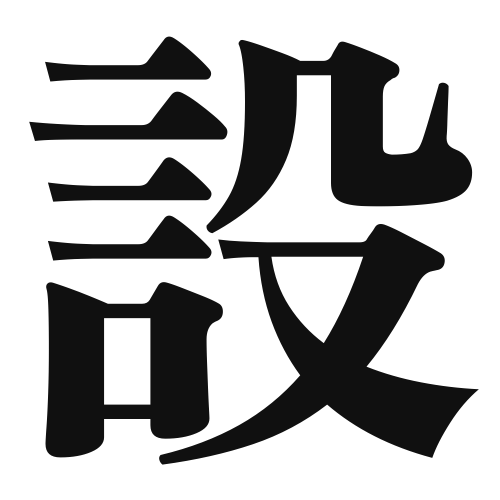1. Overview of Meaning
The kanji “設” (setsu) primarily means “to establish,” “to set up,” or “to arrange.” It is often used in contexts related to planning, construction, and organization.
2. Formation and Radical
Formation of the Kanji: The kanji “設” is a compound character (会意文字) that combines elements to convey its meaning. It consists of the radical “言” (gen), which relates to speech or words, and “設” (setsu), which suggests the act of setting or establishing something.
Radical: The radical of “設” is “言” (gen), indicating its connection to communication and expression.
3. Examples of Usage
Common Words and Phrases: Some frequently used words that include “設” are:
- 設計 (sekkei) – design
- 設立 (setsuritsu) – establishment
- 設置 (secchi) – installation
Example Sentences in Daily Conversation:
- 新しいプロジェクトを設計しています。 (Atarashii purojekuto o sekkei shiteimasu.) – I am designing a new project.
- 会社を設立する予定です。 (Kaisha o setsuritsu suru yotei desu.) – I plan to establish a company.
4. Synonyms and Antonyms
Similar Kanji: A kanji with a similar meaning is “構” (kou), which means “to construct” or “to build.” However, “構” emphasizes the physical aspect of building, while “設” focuses more on the planning and arrangement.
Opposite Kanji: An antonym of “設” is “撤” (tetsu), which means “to withdraw” or “to remove,” indicating the opposite action of establishing or setting up.
5. Cultural and Historical Background
Relation to Japanese Culture: The concept of “設” is significant in Japanese culture, especially in fields like architecture, business, and education, where planning and establishment are crucial for success.
Proverbs and Idioms: One relevant idiom is “設計図を描く” (sekkeizu o kaku), which means “to draw up a blueprint,” symbolizing the importance of planning before taking action.
